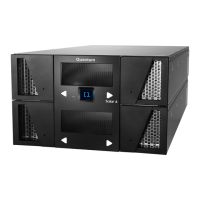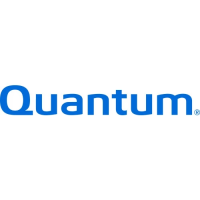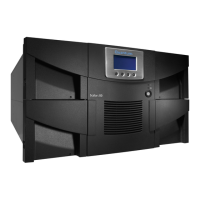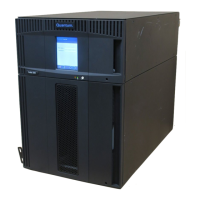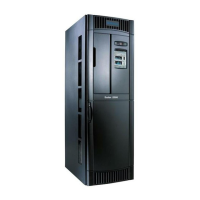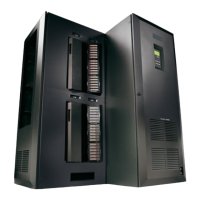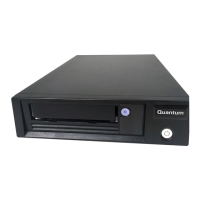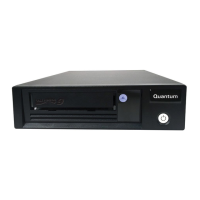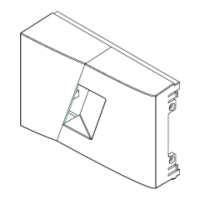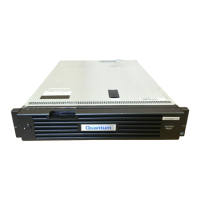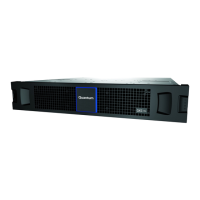124 Cabling
Attaching Hosts to FC Ports
Each FC I/O blade installed in the library has two ports reserved for connection to hosts or the SAN. These
ports are FC-1 and FC-2. By default, ports FC-1 and FC-2 are in target mode. The other four ports (FC-3,
FC-4, FC-5, and FC-6) are in initiator mode by default.
A library that has multiple FC I/O blades may have many connections to several hosts.
One way to manage these connections is through the use of FC persistent binding, which enables the
administrator to control the devices that are to be presented to the hosts.
Persistent binding permanently maps a device to the following:
• Binding type (world wide port name (WWPN), world wide node name (WWNN), or a destination
identifier (D_ID)
•SCSI bus
•SCSI ID
The driver on the host detects all devices attached to the host bus adapters (HBA). By default global
automapping assigns a binding type, target ID, SCSI bus, and SCSI ID to the device. The binding type, SCSI
bus, and SCSI ID may change when the library is rebooted. When persistent binding is applied to one of
these targets, the binding type, SCSI bus, and SCSI ID remain the same whether the library is rebooted or
whether Global Automap All Targets is subsequently disabled. The automap is enabled by default.
The binding information is permanent because it is stored in the host registry or configuration file on a UNIX
host. The driver refers to the binding information when the library boots.
You are now ready to configure the library using the instructions in C
onfiguring the Library on page 153.
Attaching FC and SCSI Drives Directly to Hosts
In direct attached library configurations, the controlling host system connects directly to either the SCSI or
Fibre Channel (FC) drives in the library.
In the direct attached configurations, the management control blade (MCB) has one library control port
(SCSI or FC) connecting to the controlling host computer. The MCB SCSI control port provides its own
termination.
Tape drives attach directly to host computers and are represented by their own unique SCSI ID or world
wide node name/world wide port name (WWNN/WWPN) and FC_LUN ID. For information on LTO-5
There are limitations on the number of hosts that can access a single drive. Limitations are summarized
below:
• SCSI-attached drives support a maximum of two initiators on the same bus
• Fibre Channel-attached drives support a minimum of one initiator
The Fibre Channel LTO-1 tape drive is an arbitrated-loop-only device (also known as an NL ports). The drive
supports Fibre Channel Arbitrated Loop (FC-AL) protocol, and uses Class 3 Service frames. The drive also
supports both public (switch-attached) and private loops. This is not true for the LTO-2 and LTO-3 drives.
Persistent binding must be redone if the fibre optical cables connected to the
FC I/O blades are changed.
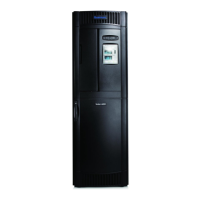
